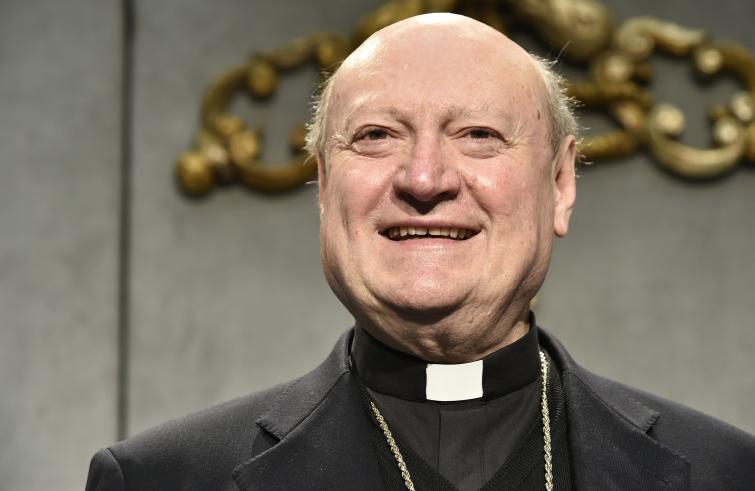
Formation of future priests in the protection of ecclesiastical cultural assets; inventory and cataloguing of these assets; involvement of the local Christian community in projects for the transformation and the new destination of redundant churches; dialogue with civil institutions. Cultural, social and charitable destinations are preferred. Conversion for commercial purposes is to be excluded. The relics placed within altars must be transferred to new altars or preserved in dedicated reliquaries. These are some of the contents of the document “Guidelines for Decommissioning and Ecclesial Management of a Former Church”, approved by the Pontifical Council for Culture – the dicastery of the Holy See responsible for such matters – and by the delegates of Bishops’ Conferences of France, Canada, United States and Australia upon the conclusion of the international Conference “Doesn’t God Dwell Here Anymore? Decommissioning Places of Worship and Integrated Management of Ecclesiastical Cultural Heritage,” (Pontifical Gregorian University November 29-30). Cardinal Ravasi, President of the Pontifical Council for Culture, anticipated the document to SIR a few hours before the publication of the Guidelines (five chapters and 11 final recommendations) on the website of the Dicastery. With a clarification: “While in some cases desacralization is legitimate, desecration is never admissible.”
Which proposed scenarios and which overall picture emerged during the Conference?
Great diversity and a wealth of proposals and experiences at national level emerged against the general backdrop of urbanization and secularization. Concrete, significant proposals have been made. We plan to encourage widespread awareness of “good practices” also for the future, presenting them as role models adapted to national contexts. The wealth of the churches was once calibrated on a social and cultural environment that presupposed a civitas Christiana, or a city untouched by current urbanism. Today, historic town centres are virtually uninhabited, serving primarily as nerve-centres of administration and management activities. This immense ecclesiastical cultural heritage is thus becoming increasingly problematic in terms of its preservation and existence. Yet it represents a permanent symbolic reality. More than half of all churches in the centre of Rome are not being used for worship, but they could never be transformed into museums because they represent a symbol of the city and for the whole world, visited by world peoples.
If the sacred status of a place of worship is removed it still preserves its symbolic function as a spiritual and artistic site.
The “lofty” assets thus will be preserved and protected as they are, even though no longer intended for worship. As regards “disused” buildings lacking symbolic qualities
desacralization is legitimate. But desecration is never admissible.
The fact that one of these sites may be reused for non-sacral purposes must not be a source
of scandal for the faithful, provided that its re-use does not conflict with the original reality of the place of worship: museums, libraries, archives, cultural and meeting centres also for the civil community, as well as charitable activity. As regards the latter, I take as an example the lunches for the poor offered in the Church of Saint Eustace or the Christmas lunch organized by the Community of Sant’Egidio in the Basilica of Santa Maria in Trastevere.
What is your reply to those who describe such initiatives as “irreligious”?
There is nothing unholy about this. I would rather describe it as a “temporary desacralization” that ultimately shares the spirit of the liturgy, a category that deserves further reflection. The Greek term for “liturgy” derives from laós (people) and érgon (opera). So it’s not confined to worship. It’s the work of a people, of a gathering. The Bible definition is “the tent of meeting”, namely, the paramount encounter with God, as well as the encounter of the faithful with one another. Divine Worship, Gospel proclamation and charity in action: liturgy is not exclusively the vertical dimension, as it extends also on a horizontal plane. There ensues that an “other” destination, which still refers to the religious community, is part and parcel of the spirit of the liturgy.
It can be described as a “paraliturgy”, namely, the continuation of liturgy in a different form.
Moreover, for Saint Francis it was legitimate to alienate Church assets and sacred objects for charitable purposes, as we have been reminded by Pope Francis in his Message to participants in the Conference.
Within these coordinates, what are the most significant recommendations, in your opinion?
First of all the indication to envisage in the formation of future priests – as well as that of recently-appointed bishops – specific training in the field of cultural heritage, highlighting the importance and the historical value of the cultural patrimony of the Church. Forms of degeneration or desecration are often the result of incompetence of unawareness. Appropriate knowledge would also promote interaction with conservation experts and State officers.

In addition to sacred edifices, Church patrimony includes sacred ornaments.
The Recommendations provide guidance also on their conservation. If removed – in case of a decommissioned church – they must be transferred to another church or preserved in a museum. As Pope Francis said in his Message, correct museum exhibition “restores to them a new life, so that they can continue to carry out an ecclesial mission.” The situation is different as regards the altars, which in case of the relegation to profane use of a church never lose their dedication and blessing. Notably, the Guidelines for the Modification of Parishes and the Closure, Relegation and Alienation of Churches, issued by the Congregation for the Clergy in 2013, establish that if they cannot be removed, they are to be destroyed. The fundamental presuppositions of the recommendation are the inventory and cataloguing of ecclesiastical cultural assets. While the Italian Bishops’ Conference is at an advanced stage of this census, the situation differs across the various national contexts, also in the light of differing national regulations on ownership of places of worship.
Participants in the Conference highlighted the importance to involve the Christian community seeking to “rebuild a virtuous bond” between the population and the territory.
In fact the Guidelines recommend
the involvement of the entire faith community, of the whole people of God
so as to avoid that – notwithstanding the respect of Canon law – the alienation of a church and its new destination may be the result of the unplanned initiative of the bishop or the parish priest. It must be a shared decision, as far as possible, and in dialogue with the civil community. In some cases the act of decommissioning is opposed by groups of non-believers. In some other cases it is motivated by instrumental purposes aimed to bring evidence of the degradation of the clergy or of the Church; other times it is opposed by people who have never set foot inside the church but consider it as the symbol of the neighbourhood, an emblem nestled in the urban fabric. Furthermore, the recommendations invite, in every decision, to be mindful of the overall context of the territory, as well as of social dynamics and pastoral strategies.
Decommissioning of churches and their future destinations should be inserted in a project that revolves around the ecclesial community in dialogue with the civil community
involving also experts in this field – professionals in cultural heritage, architects, social representatives at territorial level – to highlight the goals of this transformation that are also of a societal nature. Cultural, social or charitable purposes are to be preferred; commercial use for speculative ends is excluded.












